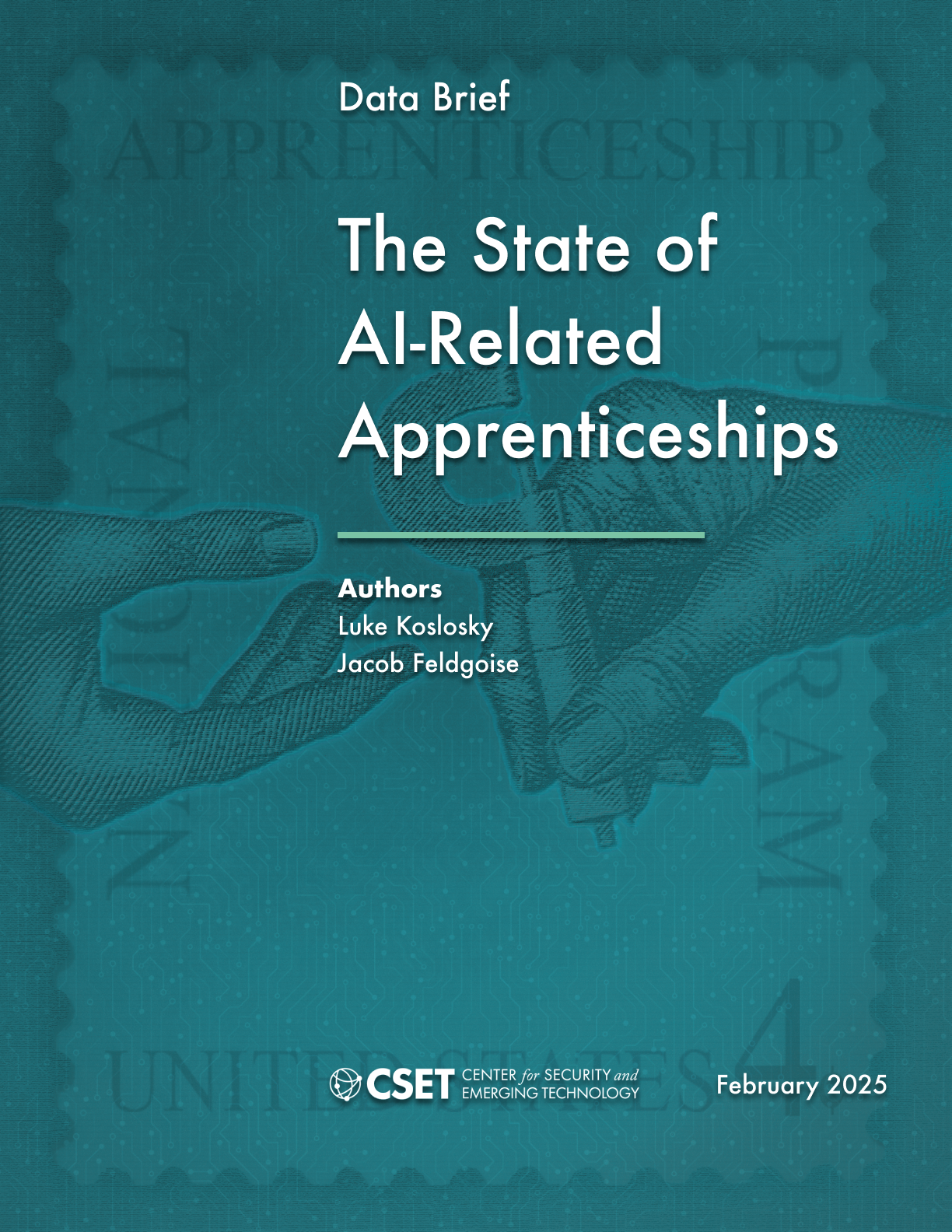Executive Summary
Over the past decade, the creation and adoption of increasingly sophisticated artificial intelligence systems have sparked a new demand for middle-skill AI talent; that is, workers who neither hold a bachelor’s nor an advanced degree. During that same time period, policymakers have committed increased attention and resources to revitalizing the nation’s Registered Apprenticeship system. The rising demand for middle-skill AI talent, combined with increased interest in a workforce development approach that has historically targeted middle-skill occupations, is the impetus for this brief examining the topic of AI apprenticeships.
The apprenticeships we describe in this brief are in occupations that share some of the knowledge, skills, and abilities (KSAs) with the range of competencies needed to create AI systems. As such, the apprentices highlighted are not necessarily currently working in AI-specific roles. However, they do possess KSAs that would allow them to participate in the design, development, or deployment of an AI product. This approach allows us to measure the amount of potential talent that could work in the AI ecosystem. We refer to apprenticeships in such occupations as AI-related apprenticeships.
In our analysis, we assessed trends in the number, completion rates, demographics, geographic distributions, and program sponsors of AI-related apprenticeships between 2013 and 2023, using a novel dataset that draws on the Department of Labor’s publicly available Registered Apprenticeship Partners Information Database System (RAPIDS). We identified a total of over 19,000 new apprentices in AI-related occupations.
As a whole, our findings show that over the past decade, AI-related apprenticeships have become a more common training pathway for the technology workforce. These programs have high completion rates, can reach underserved populations, are geographically dispersed, and are used by small- to medium-sized firms to recruit smaller numbers of workers.
- AI-related apprenticeships were practically nonexistent in 2013 but have since expanded rapidly. The first three years of our data, 2013 through 2015, had very few apprentices in AI-related occupations. Since 2015, programs have registered 18,980 new apprentices. During the highest period of growth, 2020 to 2022, the number of new apprentices in AI-related occupations increased by 191%, much higher than the rate of growth for all apprenticeships.
- AI-related apprenticeships have extremely high completion rates. On average, 68% of apprentices in AI-related occupations completed their program, which is 25 percentage points higher than the completion rate of all (non-military) apprenticeships.
- The number of organizations sponsoring AI-related apprenticeship programs also increased over time alongside the number of new apprentices. A small number of sponsors account for a large proportion of registered apprentices in AI-related occupations, but there are also hundreds of sponsors that have registered fewer than ten apprentices.
- AI-related apprenticeships have effectively recruited Black apprentices. The percentage of Black apprentices present in AI-related occupations far exceeds the percentage of Black workers in AI and STEM fields. In 2022, the number of new Black apprentices in these fields nearly equaled the number of new White apprentices.
- AI-related apprenticeships are less effective at reaching women and Hispanic apprentices. Gender disparities present in other STEM fields and in the broader AI workforce are also reflected in AI-related apprenticeships. Meanwhile, Hispanic and Latino representation in AI-related apprenticeships is lower (12%) across all years compared to their overall participation in apprenticeships (20%) from 2015 to 2024.
- AI-related apprenticeship programs are located in nearly every state, but the top ten states by new apprentices registered account for a huge share of AI-related apprenticeships. From 2013 through 2023, the top ten performing states registered 62% of new apprentices in AI-related occupations. Five of those states are not among the most populous states. Missouri, Texas, and California were the top three states in terms of new AI-related apprentices registered.
To sustain progress, federal and state governments should continue to support apprenticeship initiatives, thereby solidifying apprenticeships as a valuable pathway for workers in AI-related and other technical fields, and broadening access to quality jobs for a diverse workforce.
